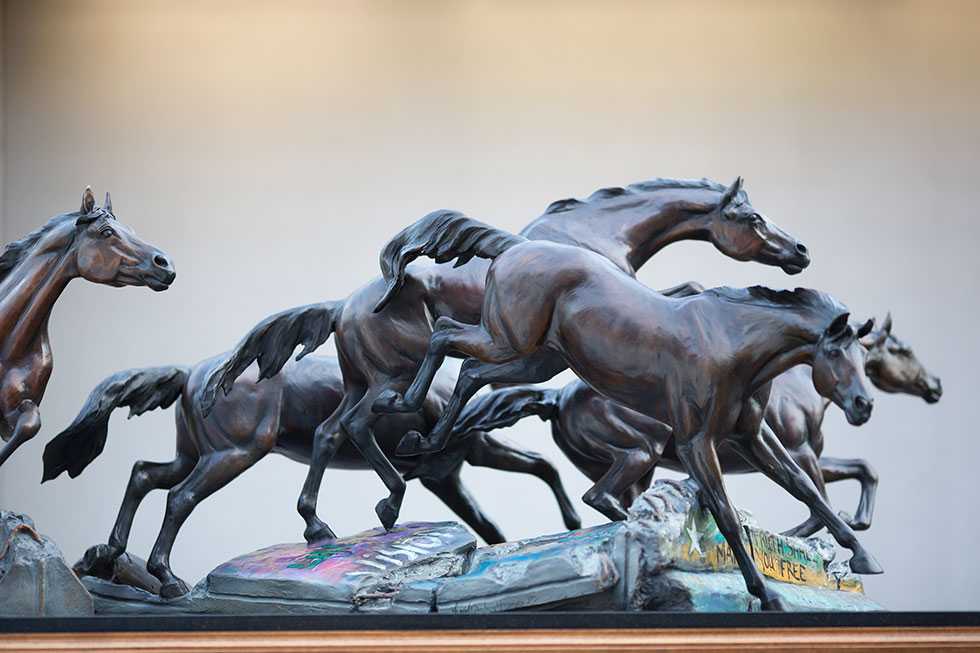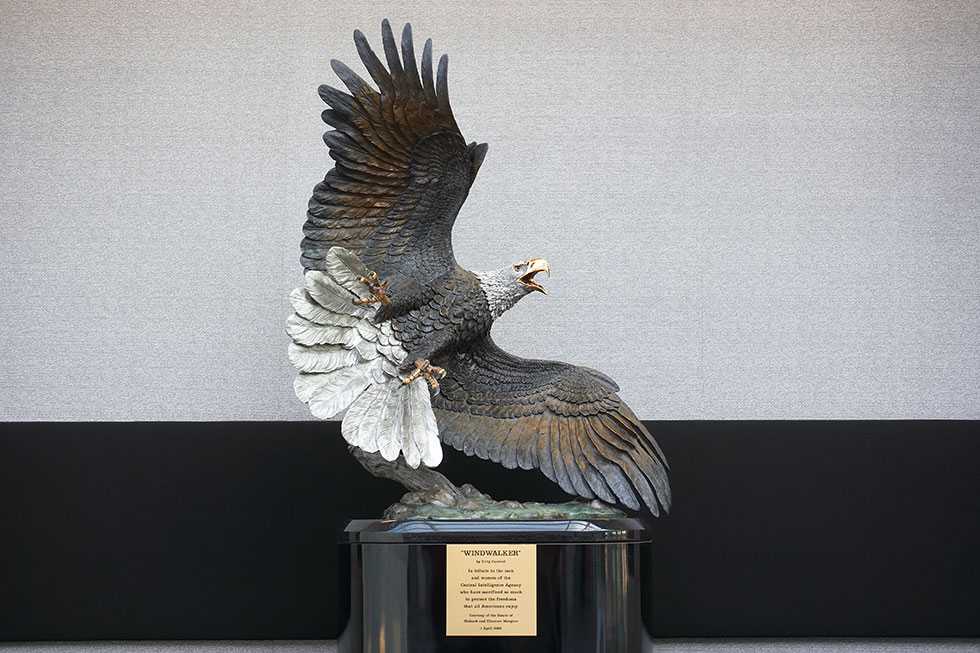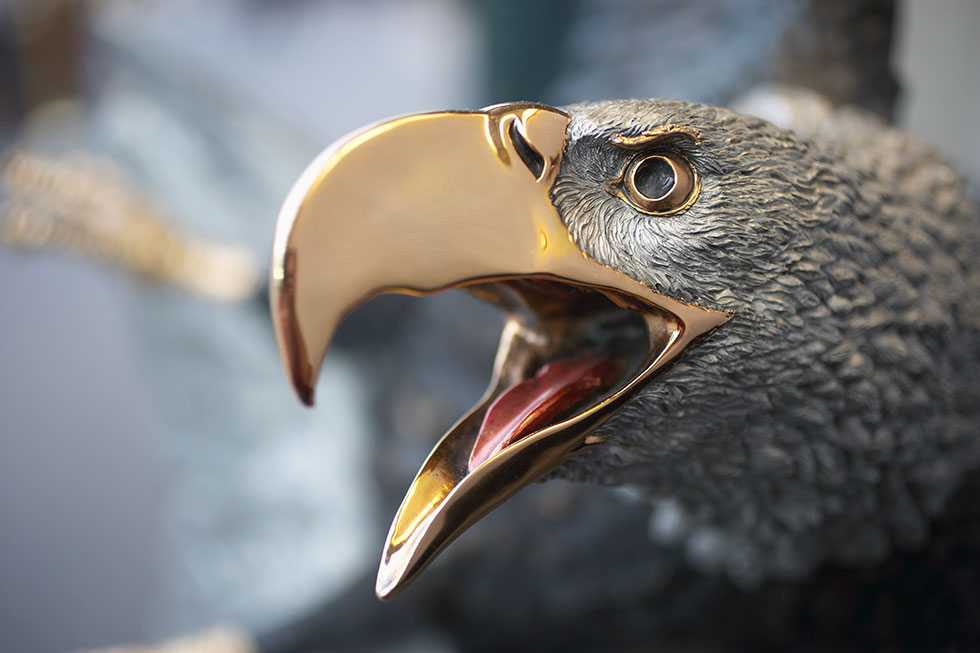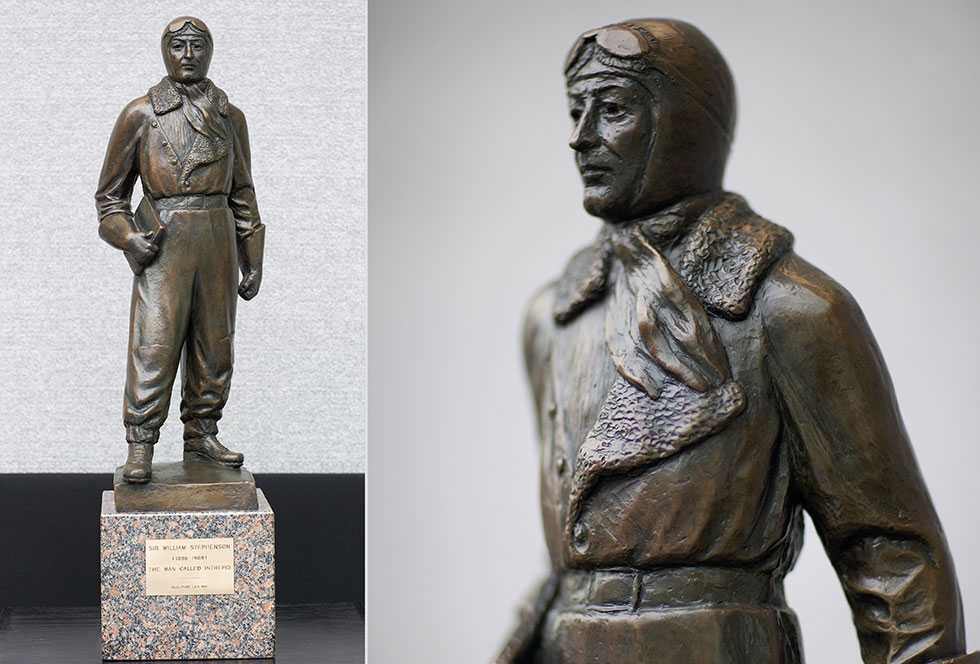About the Atrium Sculpture Hall
The NHB atrium hosts a collection of statues donated to the Central Intelligence Agency. The statues in the collection include “The Day the Wall Came Down,” “Windwalker,” and “Intrepid.”
The Day the Wall Came Down – NHB
Capturing the joy of freedom as the Berlin Wall fell on Nov. 9, 1989, “The Day the Wall Came Down,” by sculptor Veryl Goodnight, was added to the collection on Oct. 5, 2000. Known for her monument-size works, Goodnight is also one of the most renowned sculptors of horses in the United States. Artists have long used horses to represent freedom; this statue is no exception. Its flow of movement symbolizes the personal drive for freedom shared round the world. The wall in the sculpture represents all the obstacles to personal freedom both in the past and present. The stallion, representing man, is positioned on the east side of the wall urging the mares, representative of families, to a better life of freedom in the West.
Windwalker – NHB Lobby
Our national symbol, the eagle, represents vigilance, alertness, strength, courage and freedom. This dramatic 48-inch bronze eagle by sculptor Kitty Cantrell embodies all these qualities. Windwalker was added to the sculpture collection on April 1, 2002. Named for Cherokee medicine woman Five Feathered Windwalker, the sculpture belonged to the late Richard and Eleonore Morgner; their children gifted it to the Agency.
An example of an American success story, the Morgners emigrated to the United States from Germany in 1954 with little money and went on to establish 13 different companies. One of those companies, Superior Iron Works, a construction company, contributed to the construction of the New Headquarters Building, which now houses the statue. One of their children was also an employee of the CIA.
In 1999, Eleonore and Richard Morgner were killed when their private plane crashed. “Windwalker” was a favorite sculpture of Mr. Morgner’s. As a tribute to their parents, the Morgner children donated the sculpture to the Agency in recognition of the courageous work of those who serve the CIA, acknowledging that, through this work, the Agency helps protect citizens of the United States and the immigrants who look to this country as the land of opportunity.
Intrepid – NHB Lobby
A gift of the Intrepid Society of Winnipeg, Manitoba, Canada, this 22-inch statue of Sir William Stephenson (code-named “Intrepid”) was dedicated on May 2, 2000. The statue is a limited edition replica of a larger than life size bronze that stands on the Legislative grounds in Sir William’s birthplace of Winnipeg, Canada. Sculpted by world-renowned artist Dr. Leo Mol, the statue depicts the WWII hero in his aviator’s uniform.
Prior to America’s entry in WWII, Sir William Stephenson, a Canadian entrepreneur, headed the New York Office of British Security Coordination. It was Stephenson who pressed President Franklin Roosevelt to establish an intelligence “coordinator” position to oversee FBI and military intelligence activities and lobbied for William J. “Wild Bill” Donovan as the man for the job.
Donovan, having recently toured British defenses, had gained the trust of Prime Minister Winston Churchill. When America entered the war, Donovan then headed the Office of Strategic Services which worked closely with and learned from British and Canadian intelligence officials.
Stephenson was the key liaison officer for the British intelligence services and highly regarded by the Americans who worked with him. In 1946, General Donovan awarded Sir William the Medal for Merit, the highest civilian decoration awarded by the United States (and never before awarded to a foreigner).
After the war, OSS officers formed the core of the CIA which was established in 1947. Though not the father of the CIA or OSS, Stephenson played a key role in the vision that established both entities and revolutionized America’s intelligence capabilities.




